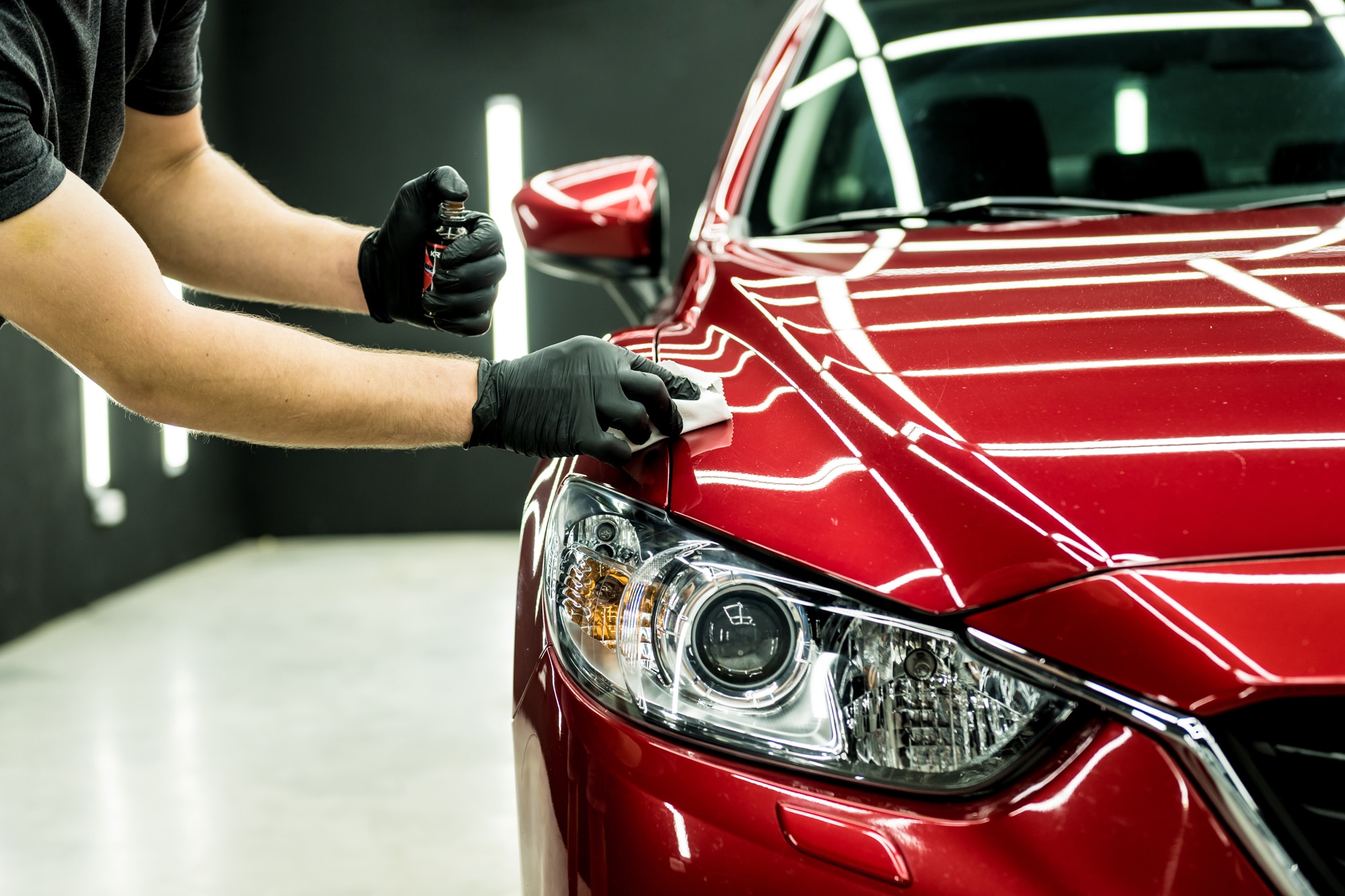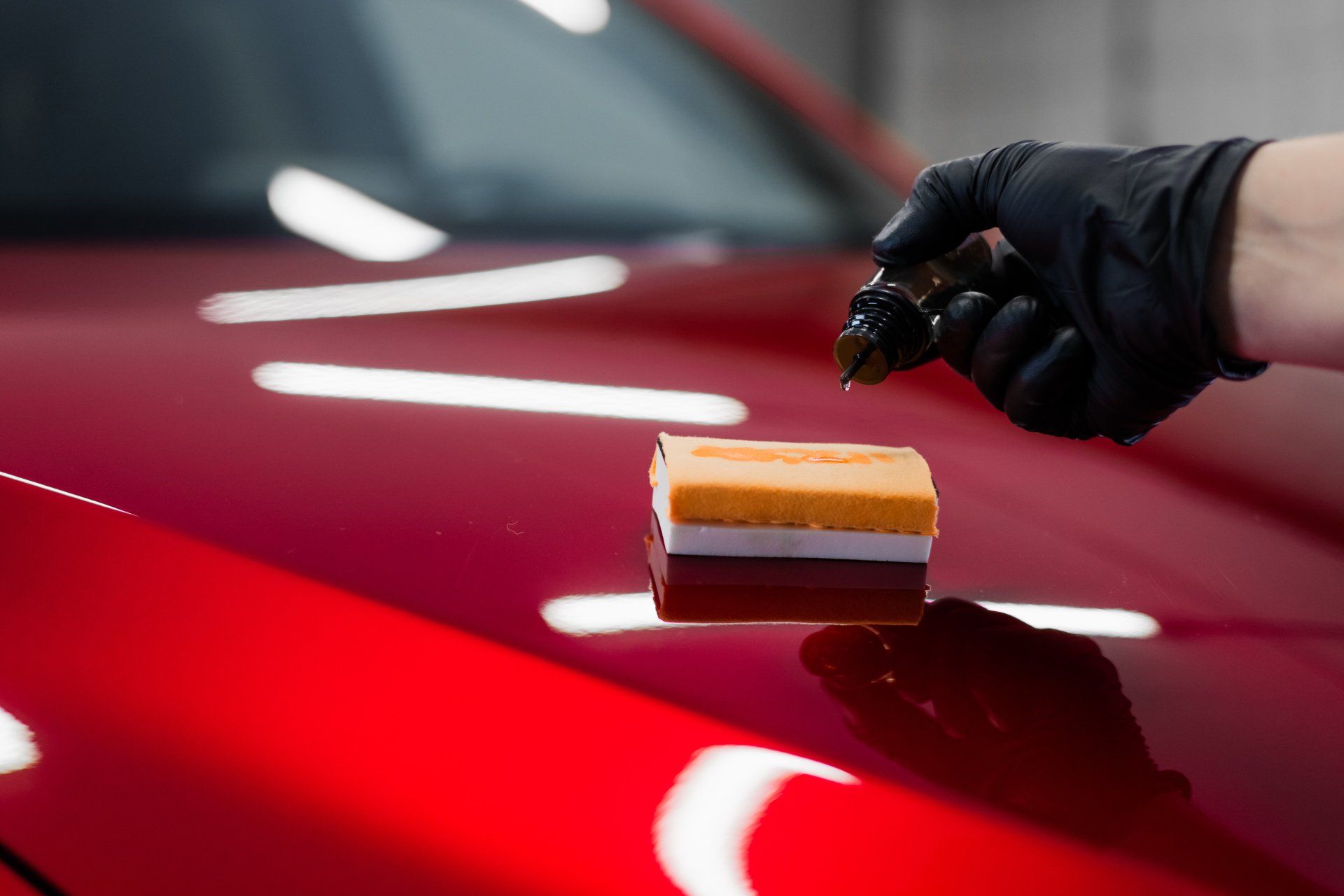The Ultimate Overview to Ceramic Coatings: Enhancing Your Vehicle's Finish and Longevity
If you're seeking to elevate your vehicle's look and security, ceramic layers could be the option you've been looking for. These sophisticated finishings bond with your lorry's paint, producing a resilient obstacle against ecological damage. But exactly how do they stack up against conventional wax? Understanding the advantages and application process can make a significant distinction in your car treatment regimen. Allow's explore what makes ceramic finishes a rewarding financial investment for your vehicle.
What Are Ceramic Coatings?
Ceramic finishes are advanced protective layers that boost your vehicle's exterior. They're made from a liquid polymer that chemically bonds with your automobile's paint, creating a durable shield. Unlike conventional wax or sealants, which disappear with time, ceramic finishings offer resilient protection against ecological contaminants like UV rays, dirt, and chemicals.When you apply a ceramic layer, you're investing in an obstacle that wards off water, making it less complicated to cleanse your vehicle and maintaining it looking more recent for longer. This modern technology aids maintain the honesty of your paint, minimizing the risk of scrapes and oxidation.Ceramic coatings been available in numerous formulations, each created to satisfy various needs and preferences. You can select a DIY kit or choose professional application, depending upon your convenience level and spending plan. Overall, ceramic coverings represent a cutting-edge remedy for keeping your automobile's aesthetic allure and durability.
Benefits of Ceramic Coatings
You disclose a variety of advantages that go beyond simple looks when you spend in a ceramic finishing. To begin with, it supplies extraordinary protection versus ecological contaminants like dust, bird droppings, and UV rays, keeping your auto's paint looking brand-new much longer. You'll observe that upkeep comes to be less complicated, as the hydrophobic residential or commercial properties create water and gunk to glide off effortlessly. This suggests less time invested washing and describing your vehicle.Additionally, ceramic coatings can boost the glossiness of your vehicle's surface, giving it that display room sparkle. They additionally use resistance to scratches and swirl marks, which assists preserve your automobile's resale worth. With a ceramic coating, you're not simply protecting your financial investment; you're likewise enhancing its overall appearance and longevity. Inevitably, this sophisticated technology guarantees your vehicle stands apart while taking pleasure in long-lasting advantages that typical waxes simply can't match.
The Application Refine: How to Use Ceramic Coatings
Applying a ceramic finishing includes a number of key steps to assure ideal results. Initially, completely wash your auto to eliminate any kind of dust, crud, or impurities. This guarantees the surface is ready and clean for the finishing. Next off, decontaminate the paint using a clay bar to eliminate ingrained fragments. Afterward, examine the paint for blemishes and polish it to attain a smooth surface.Once your automobile's surface is prepped, apply the ceramic layer in little areas. Use an applicator pad to spread the finishing uniformly, following the supplier's instructions. Permit the finish to cure for the recommended time, commonly in between one to 2 hours, relying on the product.Finally, avoid washing your vehicle for at least a week to allow the finishing bond appropriately. Following these actions will aid you attain a durable, high-gloss coating that safeguards your auto for years to come.

Contrasting Ceramic Coatings to Conventional Wax
After guaranteeing your car's surface is perfectly prepped with a ceramic covering, it's time to ponder exactly how this modern-day remedy stacks up versus typical wax. Ceramic layers provide a robust layer of protection that lasts for several years, while wax usually provides just a few weeks of luster. You'll discover that ceramic coverings bond with your paint, producing a hydrophobic surface area that fends off water and dirt, making maintenance easier.In contrast, traditional wax rests on top of the paint and calls for frequent reapplication. With ceramic finishings, you obtain superior scratch resistance and UV security, helping to stop fading and oxidation. While the preliminary investment for a ceramic layer is greater, the long-term advantages frequently surpass the prices. So, if you're looking for durability and boosted gloss, ceramic coatings are a clever option over standard wax.
Upkeep Tips for Your Ceramic Covered Automobile
To maintain your ceramic-coated car looking beautiful, regular maintenance is crucial. Begin with a gentle laundry making use of a pH-balanced shampoo; stay clear of extreme detergents that can break down the finish. Use a microfiber wash mitt to stop scratches and always wash extensively to remove any soap residue.After cleaning, completely dry your car with a soft microfiber towel to avoid water places. Think about applying a ceramic maintenance spray every few months to boost the covering's hydrophobic homes and include an additional layer of protection.It's likewise important to stay clear of automatic auto washes with rough brushes, as they can harm the layer. Rather, choose for hand cleans or touchless wash options. Furthermore, on a regular basis inspect your automobile for pollutants like tree sap or bird droppings and address them immediately to avoid etching. Following these pointers will help preserve the sparkle and resilience of your ceramic-coated automobile for years to find.
Usual Misconceptions About Ceramic Coatings
Regardless of the excellent benefits of ceramic layers, a number of myths can produce confusion for cars and truck proprietors. One common misconception is that ceramic finishings get rid of the requirement for maintenance. While they do offer boosted defense, normal washing and care are still vital to keep that high-gloss finish.Another misconception is that these coatings are scratch-proof. While they give a solid layer of protection versus small you can try this out scratches, they can't endure severe influences or abrasive materials.Many also believe that ceramic layers will certainly make their vehicles immune to all pollutants. In reality, they drive away dust and water but won't protect against issues like bird droppings or tree sap from triggering damage if left unattended.Lastly, some assume that using ceramic coatings is a do it yourself job any person can take care of, but accomplishing a flawless application commonly calls for professional try this out competence to assure peak outcomes.
Picking the Right Porcelain Finish for Your Vehicle
Exactly how do you pick the right ceramic layer for your auto? Beginning by considering the degree of protection you require. If your automobile deals with harsh weather or regular journey, select a high-end finish that offers superior sturdiness and resistance to scratches, UV rays, and chemical stains.Next, think of the application method. Some finishes call for expert installation, while others are DIY-friendly. If you're experienced, a do it yourself product might save you money, however, for the most effective results, a professional can guarantee appropriate application.Don' t forget to check the longevity of the coating. Some last a few years, while others can safeguard for a decade or even more. Finally, review evaluations and endorsements to gauge customer fulfillment. By considering these factors, you'll find a ceramic finishing that not just enhances your automobile's look but additionally gives long-lasting protection.
Frequently Asked Concerns
For How Long Do Ceramic Coatings Last on Typical?
Ceramic coverings commonly last anywhere from 2 to 5 years, relying on aspects like application, maintenance, and environmental conditions. You'll desire to follow appropriate treatment regimens to optimize their longevity and efficiency.
Can Porcelain Coatings Be Applied Over Paint Scratches?
You can not apply ceramic coatings over paint scrapes efficiently. It's finest to fix any kind of scrapes initially, making certain a smooth surface area - Final Touch Auto Works Ceramic Coatings. By doing this, the covering bonds effectively and supplies optimal security for your automobile's finish
Are Ceramic Coatings Safe for All Car Surface areas?
Ceramic click here for more info finishings are generally secure for the majority of car surfaces, including paint, glass, and wheels. Nonetheless, it is essential to examine specific item guidelines, as some layers might not be appropriate for sure products or surfaces.

Will Porcelain Coatings Protect Versus UV Damage?

Can I Do Touch-Ups on Ceramic Coated Surfaces?
You can do touch-ups on ceramic covered surface areas, but it's essential to utilize suitable items. Verify the area is tidy and comply with correct application strategies to maintain the finishing's integrity and efficiency. Unlike traditional wax or sealers, which put on off over time, ceramic finishings provide durable defense versus ecological contaminants like UV rays, dirt, and chemicals.When you apply a ceramic coating, you're investing in an obstacle that repels water, making it easier to cleanse your auto and keeping it looking newer for longer (Final Touch Auto Works Ceramic Coatings). Afterward, check the paint for blemishes and polish it to accomplish a smooth surface.Once your automobile's surface area is prepped, use the ceramic coating in tiny areas. Enable the coating to cure for the advised time, typically between one to 2 hours, depending on the product.Finally, stay clear of cleaning your automobile for at the very least a week to let the covering bond appropriately. Consider using a ceramic maintenance spray every few months to improve the finish's hydrophobic residential properties and include an added layer of protection.It's likewise smart to avoid automatic car washes with unpleasant brushes, as they can damage the layer. Ceramic finishings are normally secure for the majority of auto surface areas, consisting of paint, glass, and wheels